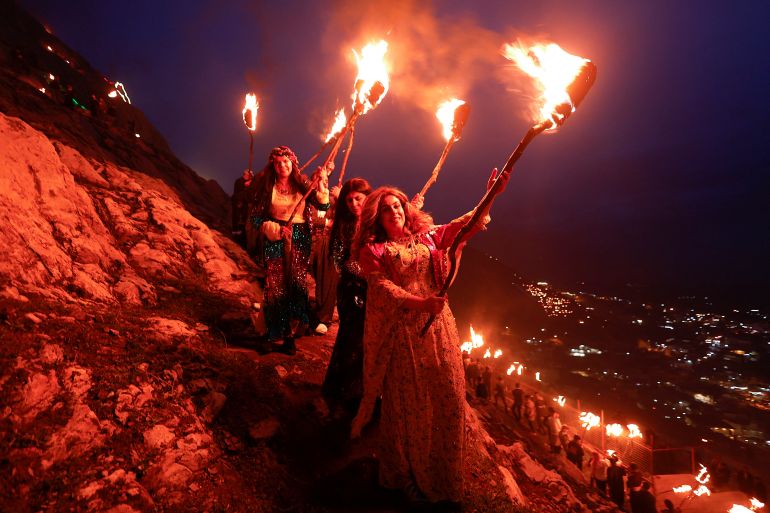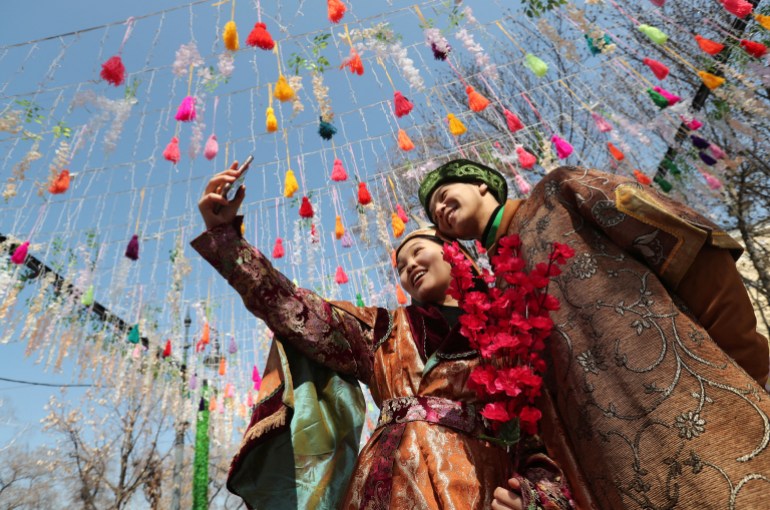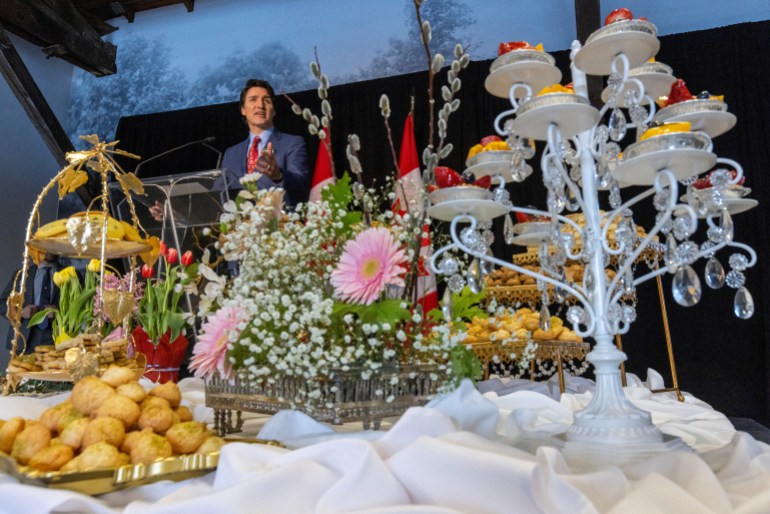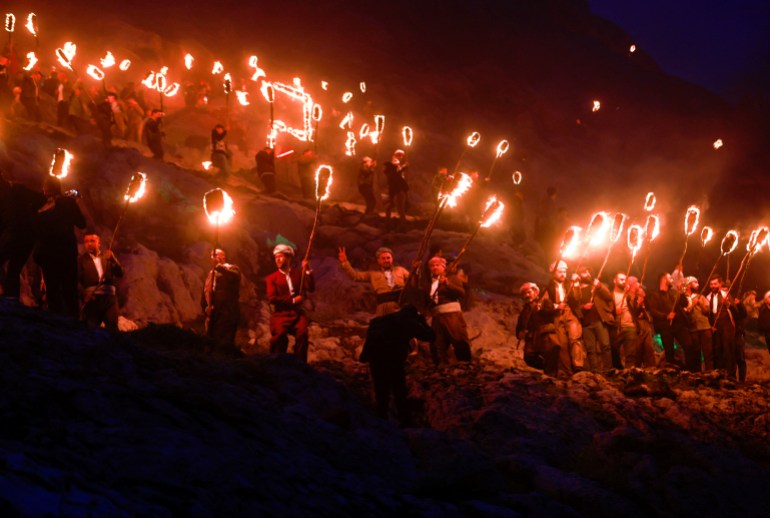What is Nowruz and how is the Persian New Year celebrated?
Some 300 million people celebrate the Persian New Year, which has been observed for 3,000 years in different regions. Here’s what we know about the festivity.

Nowruz – No-Ruz or Farsi for “new day” – is an ancient festival celebrating the first day of spring in the Northern Hemisphere.
More than 300 million people celebrate the Persian New Year, which has been observed for more than 3,000 years in different regions, including the Balkans, the Black Sea Basin, the Caucasus, Central Asia, the Middle East and others.
Keep reading
list of 3 itemsCelebrating Nowruz as a Black Iranian
‘One day to enjoy’: Economy woes dampen Afghan Nowruz celebration
Here is what to know about the festivity.
What is Nowruz?
Nowruz is a celebration that marks the end of an old year and the beginning of a new one and is celebrated on the day of the astronomical vernal equinox, which usually takes place on March 21.
The celebrations last for 13 days, and it’s an opportunity to reflect on the past and set intentions for the future.
The festival is rooted in Zoroastrianism, a religion practised in ancient Persia that predates Christianity and Islam.

According to The United Nations cultural agency (UNESCO), the return of spring has great spiritual significance, representing the triumph of good over evil and joy over sorrow.
“The Spirit of Noon, known as Rapithwina, who was considered to be driven underground by the Spirit of Winter during the cold months, was welcomed back with celebrations at noon on the day of Nowruz according to Zoroastrian tradition,” UNESCO said.
The celebration is part of UNESCO’s Representative List of the Intangible Cultural Heritage of Humanity, and the United Nations General Assembly of 2010 proclaimed March 21 as International Nowruz Day.
Happy Nowruz!
This celebration of the arrival of spring is as rich in names as it is in traditions. Bringing people together for over 3,000, #Nowruz is a great moment to step into this new year with a renewal of hope.
Discover this #LivingHeritage: https://t.co/O8jw59Nmi2 pic.twitter.com/Bl1SlZcB7W
— UNESCO 🏛️ #Education #Sciences #Culture 🇺🇳 (@UNESCO) March 20, 2023
Who celebrates Nowruz?
Given its origins, the festivity is marked in countries with significant Persian cultural influence, including Afghanistan, Azerbaijan, India, Kyrgyzstan, Kazakhstan, Pakistan, Turkey, Tajikistan, Turkmenistan and Uzbekistan.
It is also observed by minority communities in the Americas, and Europe, including in cities like Los Angeles, Toronto, and London.

How do people celebrate Nowruz?
The celebrations vary from country to country, but some common traditions are shared.
Some include symbolic preparations with fire and water and ritual dances that sometimes involve jumping over fires. The flames symbolically purge the bad experiences from the previous year.
Before the start of Nowruz, a traditional spring cleaning takes place in the houses, while, during the celebration, people reunite with family and friends. Right before the arrival of the new year, families gather and exchange wishes, with the eldest distributing sweets and young children receiving coins and presents.
But one of the most important traditions lies in preparing the Haft-Seen table.

Haft-Seen table during Nowruz
The Haft-Seen table, or the table of seven things that start with the letter S, is a family activity.
It usually starts by spreading a special family cloth on the table, and then it is followed by placing the seven S items. These can include:
- Sirkeh (vinegar): Represents age and patience that often comes with ageing
- Sikkeh (coin): For wealth and prosperity
- Seer (garlic): For good health
- Seeb (apples): For health and natural beauty
- Sabzeh (wheat): For rebirth, renewal and good fortune
- Samanu (wheat pudding): A sweet dessert for wealth, fertility and the sweetness of life
- Sumac (berries): For the sunrise and the celebration of a new day
Besides these elements, the table might also include a mirror to symbolically reflect the past year, painted eggs to represent fertility, a goldfish to represent new life, and candles to show light and happiness.
A variety of food dishes are prepared during the festivity, but “ash-e resteh” or noodle soup is usually served and is believed to symbolise the “many possibilities in one’s life”, according to research conducted by Harvard University.
Special sweets, including baklava and sugar-coated almonds, are also believed to bring good fortune and are shared during the celebration. Other dishes include fish served with special rice with green herbs and spices, symbolising nature in spring.
Navroz explained, part two: What is the Haft Seen table?
Click the link to watch the full video from the What Ismailis Believe series. https://t.co/MSBG7b4CfA (Available in Arabic, English, Farsi, French, Hindi, Portuguese Urdu)#Ismaili #WhatIsmailisBelieve #Navroz #Nawruz pic.twitter.com/4mAPME2cWO
— The Ismaili (@TheIsmaili) March 20, 2023